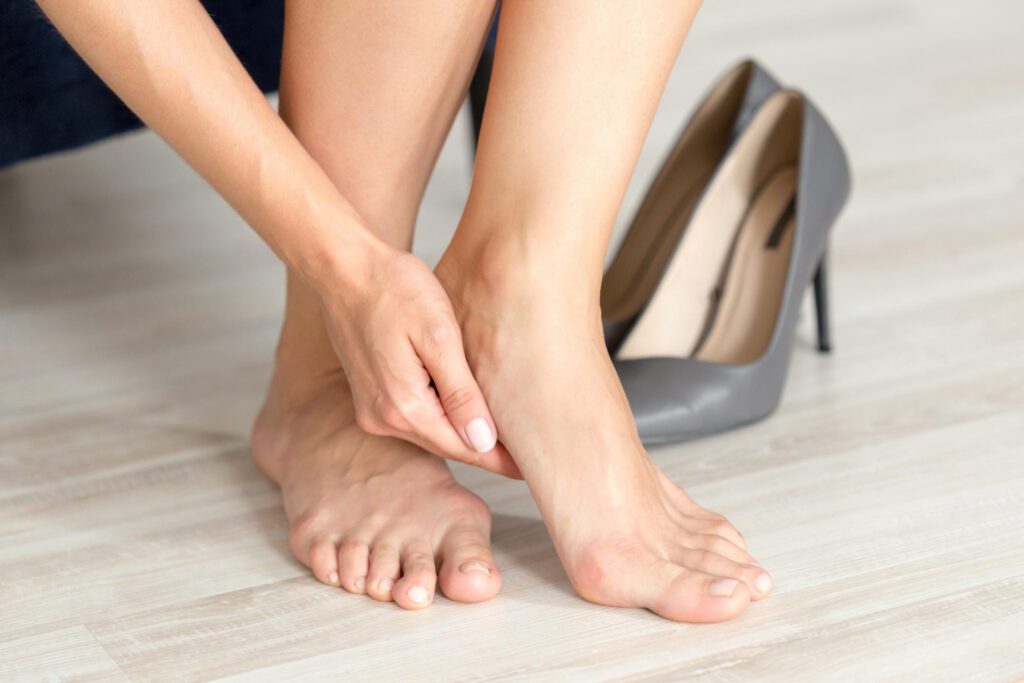Bunions might seem like a minor inconvenience at first, but they can lead to significant discomfort if not addressed. They often occur at the base of the big toe and develop gradually, causing the toe to push against the others. This can turn simple activities like walking or wearing shoes into painful experiences. When left unchecked, bunions can worsen, making it difficult to maintain your usual pace of life. Taking the necessary steps early can prevent these pesky foot problems from escalating.
Understanding the early signs and symptoms of bunions is essential in managing them effectively. It’s not just about avoiding pain; it’s about preserving the overall health and function of your feet. Bunions can become quite problematic, affecting the alignment of your entire foot and sometimes even your posture.
What Is A Bunion?
A bunion is a bony bump that forms on the joint at the base of your big toe. It’s a common foot condition and is often the result of foot structure issues. When your big toe pushes against your next toe, it causes the joint of your big toe to get bigger and stick out. Over time, this can lead to swelling, redness, and heightened sensitivity.
– Causes and Risk Factors:
– Genetics: If bunions run in your family, you might be more prone to developing them.
– Footwear: Shoes that are too tight, narrow, or have high heels can add extra pressure on your toes.
– Medical Conditions: Certain conditions like rheumatoid arthritis can also contribute to bunion development.
To understand why bunions form, imagine your feet in a pair of shoes that don’t fit quite right. Day in and day out, the toes are squeezed together, altering their natural alignment. Over time, this repeated pressure can lead to the development of a bunion.
Signs And Symptoms Of Bunions
Recognizing the signs of a bunion early on plays a significant role in treatment. The severity of bunions can vary, often starting with minor issues and progressively worsening if untreated.
– Levels of Bunion Severity:
– Mild: Slight swelling and redness at the base of the big toe.
– Moderate: Pain while walking or wearing certain shoes.
– Severe: Persistent pain, pronounced swelling, and difficulty finding comfortable footwear.
Symptoms associated with bunions aren’t just physical; they can impact your daily life. It starts with minor discomfort, possibly noticeable after a long day on your feet. As time goes by, the pain becomes more regular and intense. Shoes that once fit perfectly may feel tight and uncomfortable, and this is a reliable signal that bunions might be forming. Keeping an eye out for these signs can help prevent the condition from becoming too problematic.
Pinky Toe Bunion Treatment Options
Addressing bunions involves a range of solutions, and starting with less invasive methods can be beneficial. Non-surgical treatments are a great first step for easing discomfort and slowing the progression of bunions. These treatments typically aim to reduce pressure on the affected area, providing relief and support to help manage symptoms.
– Orthotic Devices: Custom-made shoe inserts can offer support and reduce pressure on the toes, slowly improving alignment over time.
– Padding and Taping: Gently cushioning and taping the foot can help realign the toes and reduce stress on the bunion.
– Shoe Modifications: Opt for shoes with a wide toe box, soft soles, and no high heels to prevent worsening symptoms and increase comfort.
Advanced treatments are available for more challenging bunion cases. These approaches often involve technology to address bunion issues more effectively. For instance, EPAT Shockwave therapy can enhance blood flow and promote healing, helping reduce pain associated with bunions. Additionally, Class IV Pain Laser treatment targets inflamed areas, offering advanced options for managing this condition.
Benefits of Early Intervention
Catching bunions early can be a game-changer, especially in preventing complications that may arise from the condition. Ignoring bunions can lead to greater issues, like severe foot deformities or conditions requiring surgical intervention. Making the effort early on to address bunions can keep your feet more comfortable and less likely to need drastic measures later.
Professional care provides treatment based on individual needs which is crucial for effective management. Advanced techniques available at specialized clinics can create a focused plan to manage bunions effectively. With early intervention, it’s possible to keep bunions from getting in the way of daily activities, allowing for a more active and comfortable lifestyle.
Take the First Step Towards Comfortable Feet
Acknowledging bunions can be the first step towards healthier feet. Just like a small pebble in your shoe can become unbearable during a long walk, a small bunion can lead to much more complex problems over time. By monitoring your feet and being attentive to early symptoms, you can manage bunion issues effectively before they escalate.
Seeking advice from foot specialists can lead to a more proactive approach to foot health. This affects not just how you walk, but how you live. Maintaining comfort in your feet is an important part of leading an active, busy lifestyle. Investing time in understanding and addressing bunion concerns makes all the difference in keeping your feet healthy.
If you’ve been noticing discomfort around your toes or suspect the start of a bunion, don’t wait for the problem to get worse. Learn more about how to manage symptoms and maintain foot health with professional pinky toe bunion treatment offered at Waukee Feet. We’re here to support your journey to comfortable walking and an active lifestyle.

